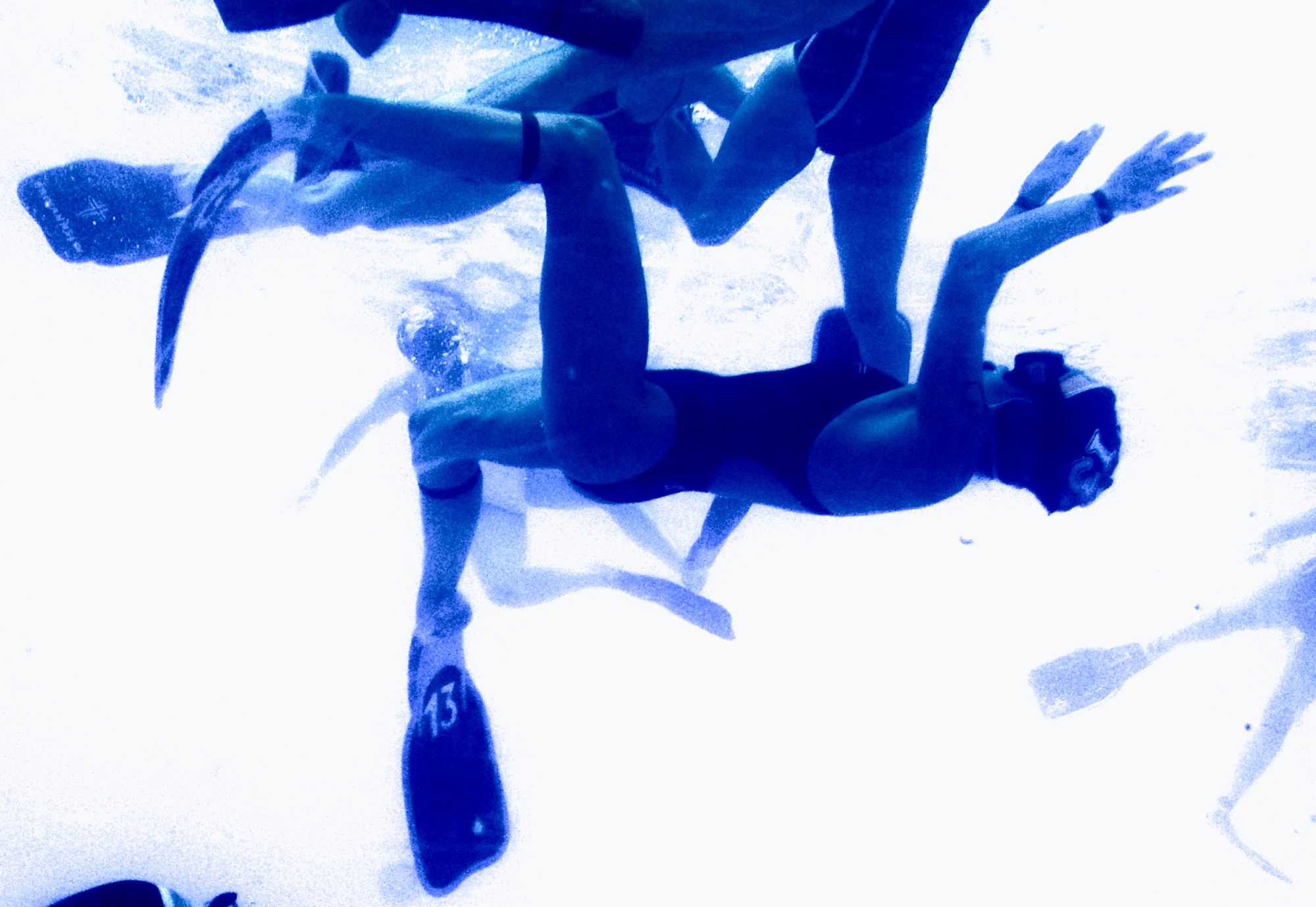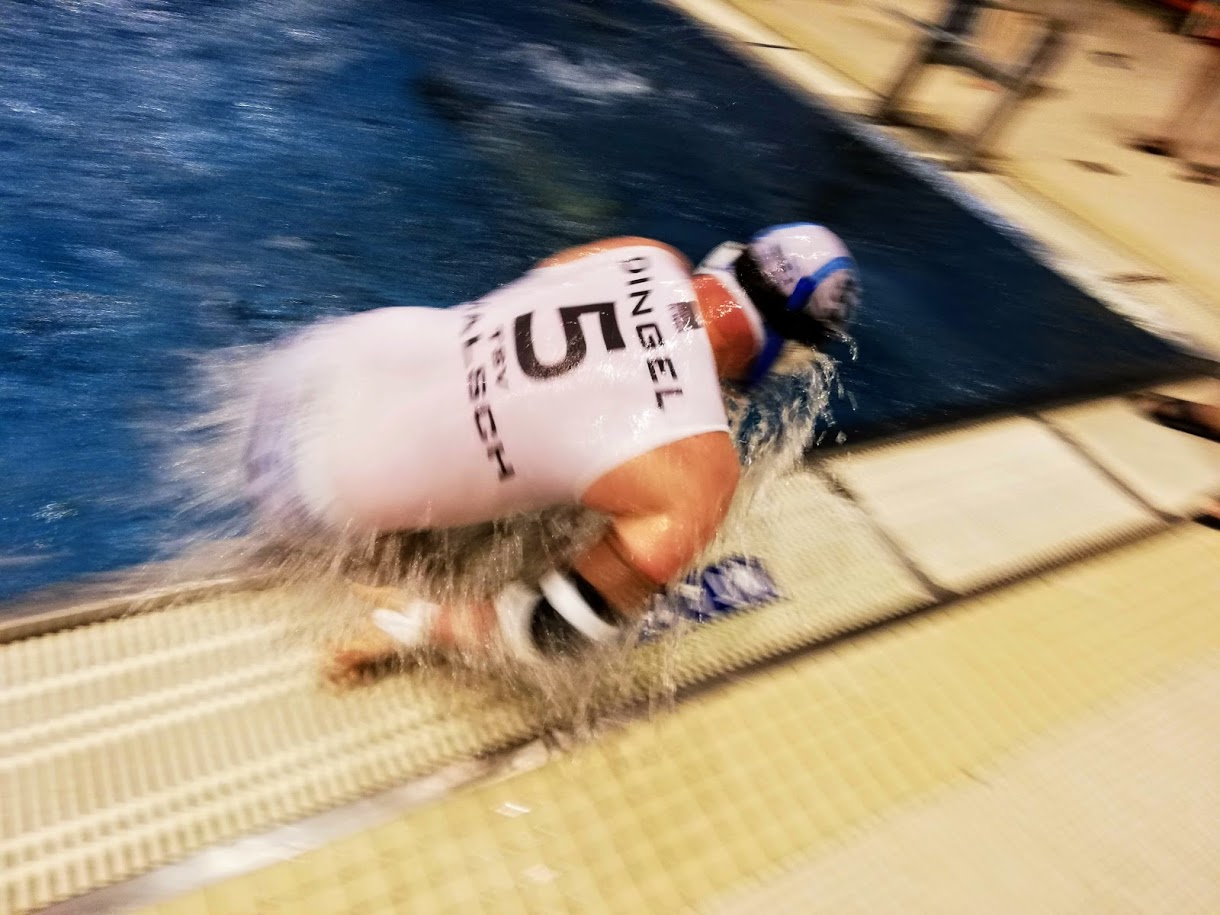
There are several reasons coaches should stop scrimmage during practice and run a drill. Underwater rugby is a physically demanding sport. Extended scrimmaging that exceeds the conditioning of even a few players will create chaos and reinforce bad habits.
Rugby is more intense than soccer (football). A regulation underwater rugby match lasts 30 minutes: two 15-minute halves with a 5-minute halftime break. Soccer matches last 90 minutes: two 45-minute halves with a 15-minute pause in the middle.
Underwater rugby has more in common with ice hockey, which has three 20-minute periods, with two 15-minute breaks in between. Like rugby, ice hockey has continuous substitutions while the game goes on. Top level hockey players are on the ice for around 45 seconds before the next line jumps in. Hockey may be more intense than rugby because the competitors must generally skate close to full speed the entire time.
The point, though, is that hockey and rugby routinely compete at the edge of physical exhaustion. Coaches train players to force themselves to perform beyond comfort so that they can maintain the team’s offensive and defensive structure. The beauty of top level hockey and rugby lies in the fluidity of action, not endless brawling.
If a club practice lasts between 90 and 120 minutes long and everyone plays with match level intensity, the disparity between players will widen. The less fit and skilled players will become even less relevant to play. The number of sloppy mistakes will increase. The number of fast breaks on unguarded baskets will go up. The number of pointless scrums will rise.
This sort of unstructured practice can be fun but is detrimental to the development of disciplined team play. If the most dominant players use their skills, strength and endurance to the max, the weaker players will not develop as quickly.
If the best offensive player is used to going in alone to score because the defense cannot cycle in their positions, that may not work well at all in competition against a team that stays together. The best players need the support of an entire team since over dependence on individual heroics is an unreliable strategy.
This is why having a variety of players score in matches is sign of good team play.
Examples from clubs in Sweden
The Stockholm club Polisen has a standing rule: during scrimmage coach Andreas Tael will stop play anytime a player loses the ball and fails to immediately forecheck to recover it or stop the other team’s forward progress. Polisen players are also not allowed to swim into the exchange zone area and loiter passively with ball. Tael will also stop play when he sees that even if the ball is not lost. After a brief review of the situation, play then resumes.
One advantage of this method is that the feedback is immediate. If at the end of practice the coach has to recall situations to discuss them, only a small minority is likely to remember what he or she is talking about. Instantaneous feedback has much more impact.
Another Stockholm club, Nemo, has a broader spectrum of players in terms of age, ability and experience. For coach Anders Hansson there is often a need to stop play so that structure can be restored. Typically, he has drills thought out ahead of time. Often the drills are very simple. All the players on one team form circle and pass the ball back and forth. This allows the players who are not as proficient at passing to concentrate on getting the ball to travel straight and briskly for a meter. While this takes places pulse rates sink to normal and after a few minute scrimmage can resume.
A more complex drill might involve three players starting on the bottom by their own goal and swimming over to score on a defender and goalie to approximate the situation when a team gets the ball while defending their own goal and need to have as many players available to take a pass when counter attacking.
For Polisen this might be a rather basic drill but for Nemo and probably many other average clubs, getting players to stay down is a habit that needs reinforcement.
At Stockholm’s third club, Caviar, attendance is sometimes sparse. When there are only 6 players total, match play for an hour and half is unproductive. Those practices are mostly drills with a few breaks to scrimmage.
Drills should be simple and address the club’s needs. Often the benefits of drills can be seen immediately in the scrimmage that follows.







